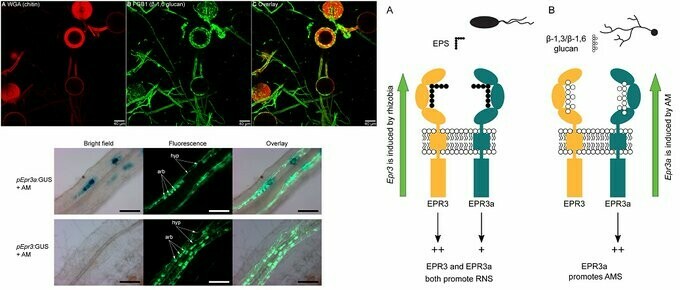PLOS Biology · @PLOSBiology
4923 followers · 1545 posts · Server fediscience.orgHow legumes detect microbes: a novel EPR3-type LysM receptor kinase recognizes fungal β-glucans & rhizobial exopolysaccharides, and regulates infection by arbuscular #mycorrhiza & #rhizobia, in the model #legume #Lotus japonicus #PLOSBiology https://plos.io/3MHEe2P
#plosbiology #lotus #Legume #Rhizobia #mycorrhiza
Alexander J. Stein · @AJStein_de
33 followers · 191 posts · Server mastodon.worldIn Europe, #legumes cover <3% of arable land; more could contribute to greater #protein self-sufficiency & lower #environment impacts of #agriculture, and decrease N #fertilizer use. But most #legume systems have lower standard gross margins: https://doi.org/10.1007/s13593-022-00861-w #landuse
#legumes #protein #environment #agriculture #fertilizer #Legume #landuse
Norbert Holstein · @dr_norb
742 followers · 556 posts · Server fediscience.org@trregeagle There are so many cool aspects about #peanuts. Peanuts belong to the #legume family (#Fabaceae) like peas, beans, chickpeas, or lupins fava beans.
As it is typical for legumes, the plants develop a close relationship with certain soil bacteria, which grow into the legume root and produce #RootNodules. Only in these nodules, these #bacteria start to fix nitrogen, which is then stred as #protein in the seeds of the #plant. That's why legumes are so valuable as #food.
#food #plant #protein #bacteria #rootnodules #fabaceae #Legume #peanuts
Ellen L. Simms · @ELSimms
85 followers · 101 posts · Server ecoevo.socialI was trying to follow ecoevo folks from my @sfba account, but got overwhelmed and decided to add a verified account here so that I could peruse the Local timeline rather than following everyone.
We are currently studying #Bacteriophages of #Legume #Rhizobia Also, #Plant #Microbiome
#bacteriophages #Legume #Rhizobia #plant #microbiome

